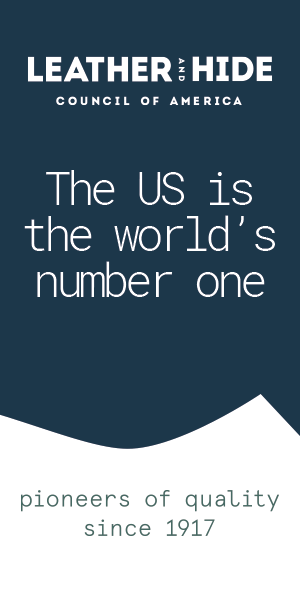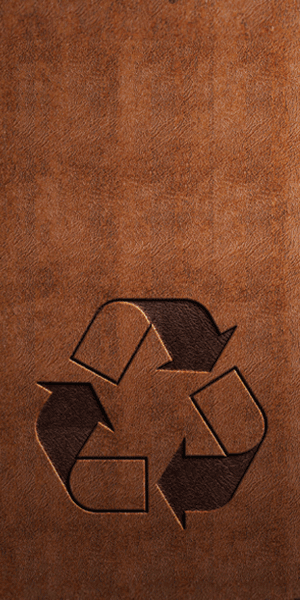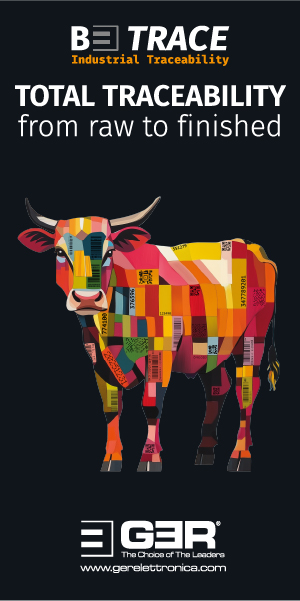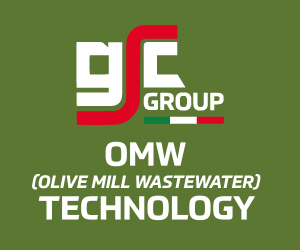Dr Luis Zugno: The return of beauty

Dr Luis Zugno has been in the leather industry for more than 45 years. He started working in tanneries in his native Brazil in 1974. He is one of a select group of people active in the industry to have earned, from the University of Cincinnati from 1984 to 1986 in his case, a PhD specifically in leather technology. He spent a decade helping to educate a new generation of leather technologists in Brazil before returning to industry, and to the US. He worked as technical director at major tanneries including Pfister & Vogel and Prime Tanning before joining, in 2002, leather chemicals manufacturer Buckman. He is now global innovation manager there. He became president the International Union of Leather Technologists and Chemists Societies (IULTCS) at the start of 2020 and will hold the presidency for two years. He is also a member of the management board of the Leather Naturally campaign.
You said at the start of 2020, when you took up the presidency of IULTCS, that there was a need for the industry to use scientific facts to combat what you called “misleading information” about leather. What is the value of facts in today’s world?
Throughout this pandemic we have experienced a lot of misleading information. Every day we hear so many lies, and lies travel faster than the truth. People just absorb the lies without processing them. In my opinion, the problem is not the liars, because liars are always going to exist. The problem is people who believe the lies. Only through education we can minimise this. People have to understand that what they see on the internet is not necessarily the truth. The information has to have something behind it: science.
Does this apply to leather too?
On the leather side, we have big challenges. We have organisations such as Leather Naturally that are bringing proper information about leather. What is strange about what is happening now is that hides have such a ‘load’ from their source, their origin. One of the problems is branding. I cannot understand why, in the twenty-first century, we still use branding on animals. Sometimes it’s not only one brand; we have found hides with 17 branding marks. Animal cruelty is not what happens in the tannery; it’s not leather people who are creating this. Why, then, must the leather industry defend animal welfare? The proper industry [the livestock, meat and dairy sector] should take this responsibility, but they won’t; they don’t care. Today, another of the biggest challenges, and I know there is a group working on this, is to prove scientifically that domestic animals are not raised for their hides and skins. When we see interviews with people about leather, they associate leather with animal cruelty and we have to take this out. We underestimate the power of this lie. We also need to properly define the allocation of hides and skins in the chain. It’s still not clear. Should it be zero? Should it be 0.42? Which is the correct number. We don’t know yet.
When will we know?
I think it’s not going to be a single number. I think the numbers must be based on different conditions, and different countries may have different types of numbers. On allocation, our biggest challenge may be to get out of the leather circle. If you go on LinkedIn, you see leather people patting each other on the back and this doesn’t bring us anything. We need to reach people outside our comfort zone, and those are the brands, consumers, bloggers and social media. I don’t know how to get there. I don’t think the leather industry knows how to get there. We have lived on maxims such as ‘we will tan every hide and skin’ and ‘nothing will ever go to waste’ and ‘we don’t have enough hides so prices are going to go up because we cannot produce more hides’. This has seen a disruption and it’s not true any more and I don’t think we thought this was going to happen and it’s caught us by surprise.
Is there an obvious example you can think of for improving the way we present leather to people outside the industry?
I think we need help with Wikipedia. When you go to Wikipedia you see tanneries in Morocco. We are trying to change this and it’s a big challenge. We’ve tried to edit the pages for leather but, a few hours later, somebody goes in and removes all the edits. Many people have tried. I don’t think we know how to do it, but we will learn. I am working with a team at IULTCS and Leather Naturally that is trying to do this, but we need more people. I am looking for a person who knows how Wikipedia works and can help us. Let’s put a call out there and see if people can help us.
Echoing the point about scientific proof, another prominent Brazilian person in the industry, Fernando Bellese, made an interesting comment about this in connection with sustainability last year. He said we in the industry are always saying that leather is sustainable, but that claiming this isn’t enough. He said we need to generate and present more science-based information to show this is true. Do you agree? If so, what concrete contribution can IULTCS make to this effort?
Well, we should start with the basics. Sustainability comes from the Latin. It means to maintain from below, to provide, to support, to keep in place. In the UN sustainability has three levels: economic, social and environmental. That means you have to have a balance on three levels to maintain life. If we wanted a clean planet, the first thing we should do is to eliminate mankind. It’s simple. We need a balance, but most of the focus in the talk about sustainability is environmental. People associate sustainability with the environmental aspect. Sustainability is broader. If you removed livestock to eliminate their greenhouse gas emissions, it would have a great economic and social impact on 1.3 billion people, according to the (UN) Food and Agriculture Organisation. This is a very complex issue and I agree with Fernando Bellese. We don’t have enough data to quantify these three levels of sustainability, and not only for leather, but for other materials also. Comparing other materials with leather [based] only on environmental indices does not work. When we have the data we can compare materials in a more efficient and transparent way. Without data, we have opinions, incorrect, old and misleading information. Most of the work I have seen on sustainability is not based on science and the people who participate in the debates have no idea about sustainability. IULTCS is a voluntary organisation and we don’t have a funding mechanism. Alone, we cannot provide all the data needed for sustainability. People say we should do all these studies, but we have no ways and means to do them. What we can do is, through the Global Leather Co-ordinating Committee (GLCC), to make a contribution to the strategic plan for the leather industry and to be a contributor to the task-forces. We have a lot of talent, but we cannot work alone.
What is the state of play with the GLCC, the body that IULTCS makes up with the International Council of Tanners (ICT) and the International Council of Hides, Skins and Leather Traders Association (ICHSLTA)?
I said at the start of 2020 to Steve Sothmann, chairman of ICHSLTA, and Kerry Senior, secretary of the ICT, that either we had to make GLCC work or we should disband it. So we said we were going to have a plan and, in March, we were going to decide, ‘go’ or ‘no-go’. For GLCC to have two meetings per year is not enough. I want to get people together. I always talk about inspiration and perspiration. A lot of people have inspiration, but now I want to see who is going to step up and work on this.
There has been consolidation in the leather chemicals sector, particularly in Europe. And yet, IULTCS still receives hundreds of abstracts from chemists and technologists from all over the world in the build-up to its biennial congresses. What does this tell us about the geographical balance of the sector in the 2020s?
Leather science work halted last year. It has affected all areas, including the Young Leather Scientists grants that we promote every year. Most of the institutes are closed [because of covid-19]. Contributions to IULTCS come from leather research institutes, government agencies, schools, independent scientists, consultants and chemical and machinery suppliers. Consolidation in Europe is going to reduce the number of projects and new technologies. This will have repercussions for the future of the IULTCS Congress. I remember the days when we had giants such as BASF and Bayer that had whole buildings dedicated only to leather from top to bottom. This does not exist any more. We have a big chunk of research groups in China and India, and Italy is becoming much more active in research, applied technology and education. Italy is still the main manufacturer of machinery and this goes together with the progress we have to make; it’s not only about chemistry, but also machinery. The two other countries that I think have big potential are Brazil and Turkey but, for some reason, we still don’t get enough material from these countries.
Do you think it’s a generational question and that there may be younger people coming through who would have more familiarity with the idea of presenting at international conferences?
There are two issues. One is funding for the young students. The second is that some institutions don’t want to do more research. A lot of leather institutions are focused on testing because they know they can make a huge amount of money on testing. It’s a problem.
You also talked at the start of your tenure about IULTCS having a role in providing tanners with motivation and “uplift”. Clearly, 2020 presented challenges we weren’t expecting and it may be even more important to provide this motivation in 2021. What are your hopes for the new year?
I’m optimistic. We have to have a choice between being a victim of the situation and doing something about it. We have to do something about it. I think we have to work together even more than I was expecting we would have to. Organisations have to work together because, alone, we won’t be able to survive. At IULTCS we have a lot of projects, but most importantly, we have a great attitude. We don’t want to be a victim of the situation that we have today. There are ways out and we should work on them, working together. We have a relationship of collaboration with Leather Naturally. We have very good contact with the member societies and they have been very motivated, holding a lot of activities virtually, webinars and conventions. We saw a lot of progress and this is very rewarding. We have the XXXVI IULTCS Congress this year in Addis Ababa, then we have two in 2022, the European Congress in Italy and the Asian Congress in New Zealand. These are just ahead of us now, so let’s get ready. Throughout the years the IULTCS congresses have been the pinnacle for scientific, technological and practical work on leather. We do not anticipate any change in the future. I’m optimistic about the future; I really believe that we are going to have a kind of Renaissance. People who were locked down are going to look hard at their values and their relationships, and they are also going to look at beauty: art, culture, music, wellbeing. Leather can be a part of this; we can come back to the natural, luxury, beautiful and durable material. People are going to say: “Enough of plastic, let’s get something more natural”. We can talk about the old dream of Arcadia; we have to have hope and dreams as well.
When you look as an experienced scientist at the processes leather manufacturers use, which are the innovations that have made the biggest impression on you?
In my career I have seen a few innovations that have made a great impact and I am going to name them. One is Lubritan, the retanning fatliquor polymer [developed by Rohm and Haas Corporation and launched in 1990]. I was lucky because I was working at Rohm and Haas in Brazil when the first batch of this product was made. This was a big revolution in technology. We have also rollercoaters, which existed already, but they have evolved so much they have made spraying machines, in many cases, obsolete. Then there are water-based topcoats. When I started in the leather industry, if you wanted automotive leather, you had to spray vinyl with very nasty solvents. That was the only thing available in the old days. Also, the Cangilones drums [from Olcina] that allow you to use less water, less energy and produce good-quality leather, were an evolution. Stucco changed the way for Brazilian leather, which was full of holes and other damage; people took stucco, pasted it into the holes and made good leather. And, finally, Kind Leather [from JBS Couros]. I think this idea is brilliant and has a huge potential to be explored.
Which are the areas in which you see still the greatest challenges and what would you like to see happen in the coming years to address them?
One of the biggest challenges we have is the removal of sulfide. Sulfide is very economical and is 100% effective. You can work in any part of the planet and achieve 100% hair removal. We have to redesign the way we do unhairing, the way we prepare hides for tanning. For example, lime has been used since the beginning of the leather age. Can we remove lime so that we don’t [later] have to do deliming? This is a challenge that I pose. Hides and skins have one of the most complex protein structures, collagens; there’s not only one type of collagen. Mother Nature made collagen so unreactive for a biological purpose. When we look at the periodic table, there are only a few chemicals that can react with collagen. Our challenge for the future is to tan collagen just enough to make a useable product, one that is biodegradable and non-toxic. I would question if, today, we maybe overdo the tannage and make leather that is too good when it doesn’t need to be so good. We have to redesign the process chemically and mechanically to use less water and chemicals and reduce waste. Today, we still have a lot of syntans and this is technology of the 1940s. We make wet blue that is just good enough, but then we put in a lot of chemicals in the retanning, dyeing and fatliquoring process. We should find a better way of doing it so that we don’t have to put so many chemicals into leather.
Do you see signs of these developments happening?
Not yet. People put in more chemicals instead of removing chemicals. The solution is not always to put in more; sometimes you have to use less. This comes back to the people we have available to do research. This is the biggest challenge. How can we make a better retanning, dyeing and fatliquoring process? How can we streamline it to make it very simple? And in finishing, I mentioned that we make very good water-based topcoats, but they are not biodegradable. The leather will disintegrate, but the topcoat is not going to disintegrate. So we need to work to make biodegradable coatings. Chamois is a kind of perfect leather. You put in oil, but no retanning, no fatliquor, no dye and you have a piece of leather that is going to last for ever and, once you put it into the soil, is going to be biodegradable. What can we learn from the chamois? People don’t like to change things but when you look at innovations, they involve people making changes. I remember with the Cangilones drums, at first people said they didn’t work, but then they learned how to use them. For the last 20 years, I have been following all developments with nanotechnologies, all the papers and publications. Practically nothing has come of nanotechnology; there is also a big regulatory concern with nanotechnology.. Sometimes we put research time and effort into the wrong things and nanotechnology is one of them, in my opinion. I might be wrong, but I don’t believe it is going to be applied efficiently to leather. The regulatory issue is that, with nanotechnology, you have to put nano-particles into the leather. And what happens if the particles start to come onto your skin? We still don’t know. We think sometimes it’s only about chemistry, but it’s not. The future of leather technology is going to be chemical and mechanical processes. For example, drying. If you don’t dry leather properly, you won’t have a good product. To dry it slow or fast will give completely different types of leather. There are a lot of things that we used to know but that, today, we have lost. We need to do something different. That’s the reason we are where we are today. We thought that we were never going to waste a hide, but things can change very fast. Think about a hide: there is no other natural material that has integrity. Wool, you have to spin it, you have to do something; the same with cotton and with silk. With all these other natural materials, you have to do something to create an article. The hide is the only material that is soft, pliable and that has integrity. We must keep tanning.






























